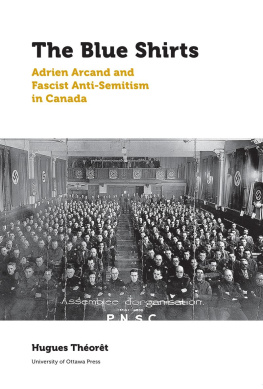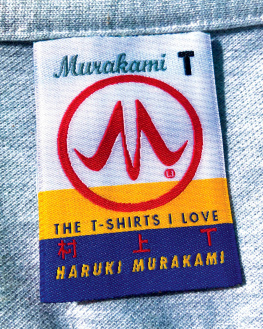VISITING WITH THE ANCESTORS
Blackfoot Shirts in Museum Spaces
Laura Peers and Alison K. Brown

Copyright 2015 Laura Peers and Alison K. Brown
Published by AU Press, Athabasca University
1200, 10011 - 109 Street, Edmonton, AB T5J 3S8
ISBN 978-1-77199-037-0 (paperback) 978-1-77199-038-7 (pdf) 978-1-77199-039-4 (epub)
doi: 10.15215/aupress/9781771990370.01
Cover and interior design by Marvin Harder, marvinharder.com
Printed and bound in Canada by Friesens
Library and Archives Canada Cataloguing in Publication
Visiting with the ancestors : Blackfoot shirts in museum spaces / edited by Laura Peers and Alison K. Brown.
Includes bibliographical references.
Issued in print and electronic formats.
1. Siksika IndiansMuseums. 2. Siksika IndiansClothing. 3. Cultural propertyAlberta. 4. Museums and communityAlberta. 5. Museums and IndiansAlberta. 6. Museums and IndiansGreat Britain. I. Peers, Laura Lynn, 1963-, editor II. Brown, Alison K. (Alison Kay), 1971-, author, editor
AM21.A43V58 2016 069.50899735207123 C2015-907508-4
C2015-907509-2
We acknowledge the financial support of the Government of Canada through the Canada Book Fund (CBF) for our publishing activities.
We acknowledge the support of the Canada Council for the Arts, which last year invested $153 million to bring the arts to Canadians throughout the country. Nous remercions le Conseil des arts du Canada de son soutien. Lan dernier, le Conseil a investi 153 millions de dollars pour mettre de lart dans la vie des Canadiennes et des Canadiens de tout le pays.
Assistance provided by the Government of Alberta, Alberta Media Fund.

Please contact AU Press, Athabasca University at for permissions and copyright information.
Contents
Illustrations
FIGURE
7 Writing-on-Stone area, with Sweetpine Hills (also known as Sweetgrass Hills) in
background
VISITING WITH THE ANCESTORS
VISITING WITH THE ANCESTORS
Introduction
In May of 1841, Sir George Simpson, governor of the Hudsons Bay Companythe principal fur trade company operating in North America at the timeset out on his annual tour of inspection of the companys trading posts, a journey that was made possible by an elite crew of Metis and First Nations voyageurs. Taking with him his secretary, Edward Hopkins, Simpson left from Montral, travelling by canoe across the Great Lakes, then to Lake Winnipeg, down to Red River, over the prairies to Fort Edmonton, and across the plateau and the Rockies to Fort Vancouver. The group then continued on to San Francisco, where Simpson sent Hopkins back eastward, while he kept heading west, to Hawaii, across Russia, and eventually to England (Simpson 1847).
As they travelled, Simpson and Hopkins amassed a large collection, which included hunting equipment, such as a gun case, bows and dozens of arrows, a hunting hood, a cradleboard and an embroidered bag, two scalps, and a mask from the northwest coast of Canada, as well as carved clubs and swords edged with shark teeth from the Pacificover two hundred objects in all. Five shirts and five pairs of leggings, described as Blackfoot, were also acquired on this journey. Edward Hopkins kept the collection, which he displayed first in his house in Montral and then in his homes in London and later in the town of Henley-on-Thames, near Oxford, when he retired there in 1870. After his death in 1893, Hopkinss family transferred the collection to the Pitt Rivers Museum, in Oxford.
The five shirts are all quite different. Three of them are hairlock shirts, that is, shirts adorned with locks of either human or horse hair. Another has intricate quillwork and long hide fringes, while the fifth has no decoration and is made of poorer quality hides. Each of them has stories to tell, stories that are now partially lost but that remain important to Blackfoot people today.
At the request of Blackfoot ceremonial leaders, these five shirtsand the spirits of those who made and wore themcame home to Blackfoot territory for a visit in the spring of 2010. This book is about what happened: about how this visit became possible, about how Blackfoot people responded to the presence of the shirts, about the significance of these shirts for Blackfoot people today, and about why projects such as this one need to happen.
This is also the story of developing relationships across cultures and between Indigenous communities and institutions. Both the Blackfoot and non-Blackfoot partners in this project hope that our experiences will assist others in building similar relationshipsrelationships that will contribute to changes in the way that museums care for and interpret Indigenous material heritage and that will allow this heritage to become more readily accessible to those whose ancestors created it. Developing these relationships is a challenge, and one of the things we try to convey in this volume is a sense of the tensions in that process, as well as why it was necessary to work in the way we did. This was, in many respects, a difficult project: it challenged the assumptions on which museums ordinarily operate, and it challenged Blackfoot cultural protocol. For that reason, it was also profoundly transformative for all who participated in it.
This has been a collaborative project from the start. It originated with Alison Browns doctoral research, which focused on collecting expeditions in Canada and involved fieldwork with Blackfoot communities in southern Alberta as well as research in Canadian museums (Brown 2000; see also Brown 2014). The two of us then spent five years working with the Kainai, one of the four Blackfoot nations, on a project about historical photographs (see Brown et al. 2006). During this time, we also got to know Blackfoot from the other three nationsPiikani and Siksika, in Canada, and Blackfeet, in the United Statesat community events celebrating Blackfoot cultural heritage. Although we knew little about the Blackfoot shirts in the Pitt Rivers Museum at that time, we suspected that they were important and relatively rare, so we sometimes showed photographs of them to Blackfoot friends and colleagues and asked whether they were familiar with this kind of clothing and whether they had any suggestions about how best to look after the shirts. In 2004 an opportunity arose to invite Andy Blackwater and Frank Weasel Head to Oxford to view the shirts themselves. After that visit, Frank and Andy asked the staff of the Pitt Rivers Museum whether the shirts could come home for a visit, to inspire other community members, and the Blackfoot Shirts Project was born. We then embarked on a year of formal consultation with all four Blackfoot nations, with the support of the universities of Aberdeen and Oxford. This consultation work was crucial to ensure that community needs and cultural protocols for handling sacred items would be built into our work with the shirts before we submitted a grant application for project funding.
Just as the project itself was developed with guidance from Blackfoot colleagues, so was this book. At a meeting in the spring of 2011, held at the Pitt Rivers Museum, we sat with many of the people who had most intimately guided this project and worked through the themes they wished to include in the book, the basic story of the project, what the goals of the book would be, and for whom it would be written. Our Blackfoot mentors wanted to emphasize the relationships that have surrounded the shirts from the time they were made and then acquired by George Simpson and Edward Hopkins and compare these relationships to those developed in the course of this project. The book is therefore as much about the process underlying this project as it is about the shirts themselves.










